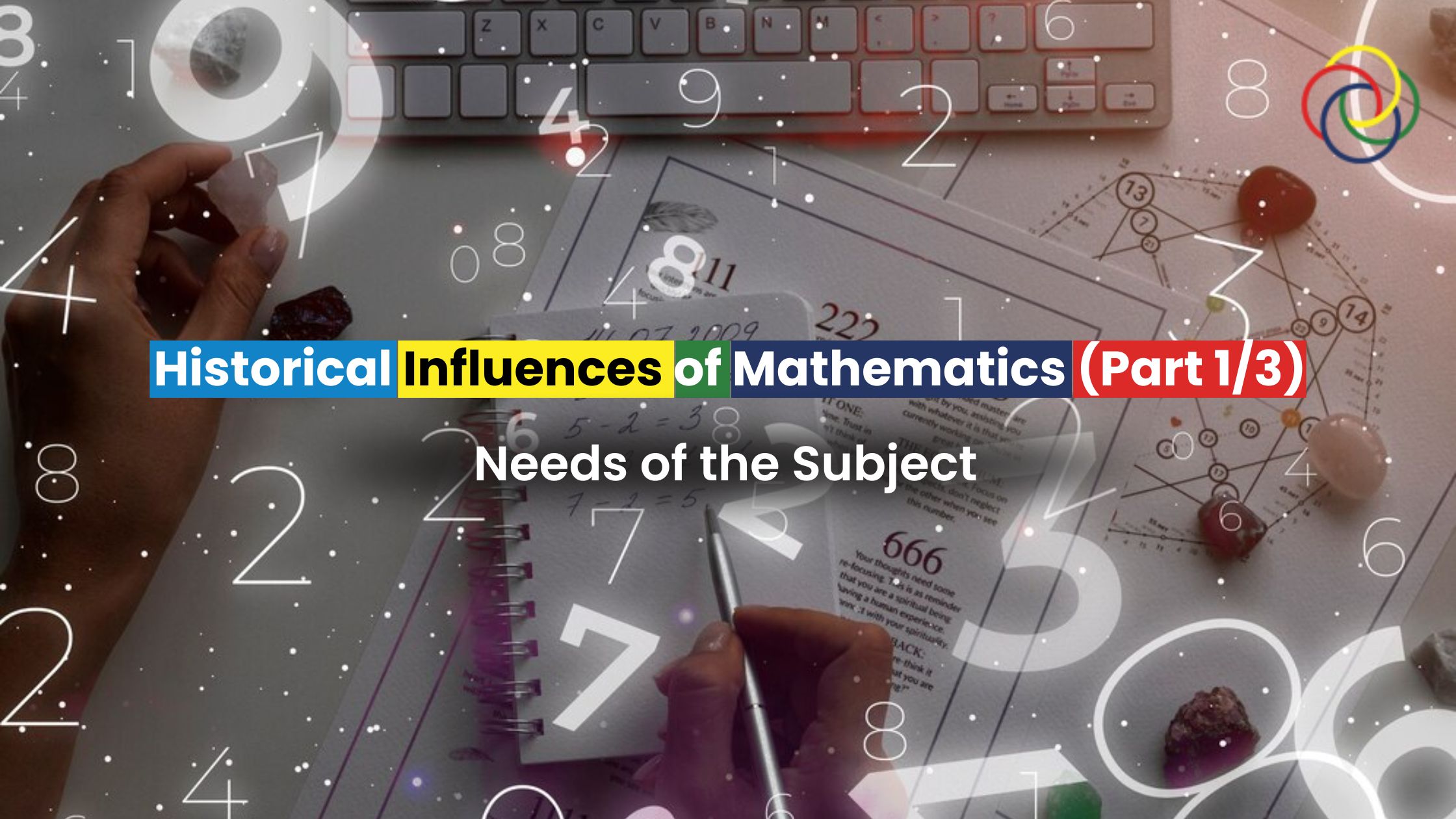Three factors—the needs of the subject, the child, and the society—have influenced what mathematics is to be taught in schools. Many people think that “math is math” and never changes. This three-part series briefly discusses these three factors and paints a different picture: mathematics is an ever-changing subject.
In the first part, we discuss-
Needs of the Subject
The nature of mathematics helps determine what is taught and when it is taught in elementary grades. For example, number work begins with whole numbers, then fractions and decimals. Length is studied before area. Such seemingly natural sequences are the result of long years of curricular evolution. This process has involved much analysis of what constitutes a progression from easy to difficult, based in part on what is deemed necessary at one level to develop ideas at later levels. Once a curriculum is in place for a long time, however, people tend to consider it the only proper sequence. Thus, omitting a topic or changing the sequence of issues often involves a struggle for acceptance. However, research shows that all students do not always learn in the sequence that has been ingrained in our curriculum.
Sometimes, the process of change is the result of an event, such as when the Soviet Union sent the first Sputnik into orbit. The shock of this evidence of another country’s technological superiority sped curriculum change in the United States. The “new math” of the 1950s and 1960s was the result, and millions of dollars were channeled into mathematics and science education to strengthen school programs. Mathematicians became integrally involved. Because of their interests and the perceived weaknesses of previous curricula, they developed curricula based on the needs of the subject. The emphasis shifted from social usefulness to such unifying themes as the structure of mathematics, operations and their inverses, systems of notation, properties of numbers, and set language. New content was added at the elementary school level, and other topics were introduced at earlier grade levels.
Mathematics continues to change; new mathematics is created, and new uses of mathematics are discovered. As part of this change, technology has made some mathematics obsolete and has opened the door for other mathematics to be accessible to students. Think about all the mathematics you learned in elementary school. How much of this can be done on a simple calculator? What mathematics is now important because of the technology available today?
As mathematical research progresses and new theories and applications emerge, the curriculum must adapt to incorporate these advancements. For example, the development of computer science has introduced concepts such as algorithms and computational thinking into mathematics education. These topics were not traditionally part of the elementary curriculum but have become essential due to their relevance in today’s technology-driven world. Additionally, as interdisciplinary fields like data science and quantitative biology grow, there is a pressing need to equip students with skills in statistics, probability, and data analysis from an early age, and here, the International Maths Challenge is playing a crucial role. This integration ensures that students are prepared for future academic and career opportunities that increasingly rely on mathematical literacy. Furthermore, globalization and the interconnected nature of modern societies require students to understand complex systems and patterns, necessitating the introduction of topics such as systems theory and network analysis. Consequently, the curriculum evolves not only to preserve the integrity and progression of mathematical concepts but also to reflect the dynamic and ever-expanding landscape of mathematical applications in the real world.
End Note
In the next blog, we will move towards the second factor: understanding the need for mathematics in a child’s education can set a foundation for problem-solving, logical thinking, and even everyday decision-making. In the following blog, we will delve into why mathematics is not just a subject but a vital tool for a child’s overall development and future success. Stay tuned for further updates!


